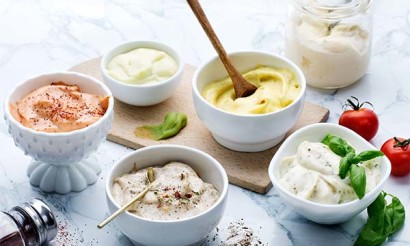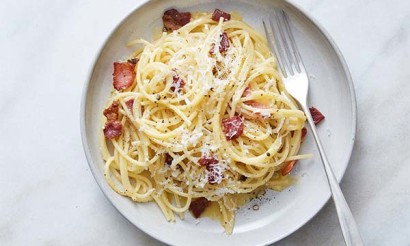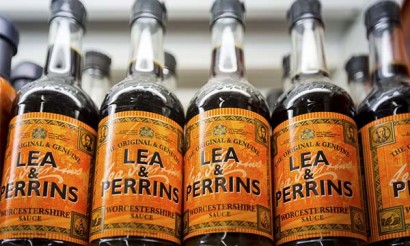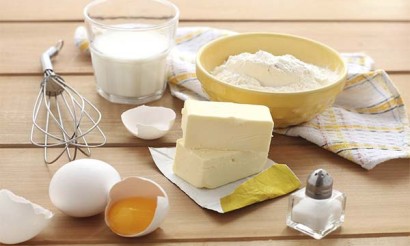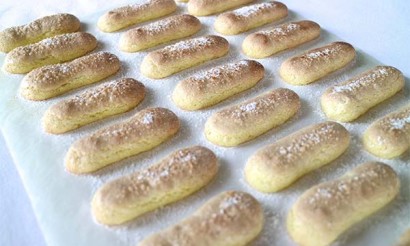How to replace leavening dough at home
Many people think that leavening agent and baking soda are the same thing, but this is completely wrong. Baking soda is radically different from leavening agent and has a completely different effect when added to baked goods. So, let's get to the bottom of this.
- What is leavening agent for dough
- Types
- Why do you need it?
- What kind of dough you need leavening agent for?
- What can be used instead of leavening dough
- Soda
- Alcohol
- Carbonated water
- When you can not replace the leavening agent
- How to prepare leavening dough at home
- How many grams of leavening agent are in a spoon?
- by the teaspoon
- Tablespoon
- How to measure a certain weight of leavening agent with a spoon
What is leavening for dough
The leavening agent, or as many call it - baking powder, consists of a mixture of baking soda, starch (flour) and citric acid. All of these substances make the dough puffy when baked by the formation of carbon dioxide, which is due to the process of combining baking soda with acid. For this reaction to occur, mix the ingredients in certain proportions: 5 grams of baking soda, 3 grams of citric acid, 12 grams of starch or flour. There are different types of leavening agent substitutes, but they also have these properties.

Types
The leavening agents are those substances that promote the formation of gaseous substances that help the dough to become soft and porous. There are three types of leavening agents:
- chemical - soda, ammonium carbonate
- biological - yeast;
- Mechanical - whipped egg whites and air.
Chemical leavening agents
Soda (sodium bicarbonate) is a white crystalline powder that has a brackish and slightly alkaline taste. When heated or added to various acids, it releases carbon dioxide, which helps to loosen the dough.
Soda should be put in the dough only according to the recipe. If there is too much baking soda, the resulting products will take on a dark yellow color, an unpleasant taste and smell, and most importantly - all the vitamins are destroyed. Before adding baking soda to the dough, you must either sift it or dilute it in water, and then strain it.
Ammonium bicarbonate, like baking soda, has a white crystalline form. When using it as a leavening agent, you should know that when it is heated and acids are added to it, it emits not only carbon dioxide, but also ammonia. It must be diluted in water that will not exceed 25 degrees before dipping it into the dough. The ammonium should be diluted in the ratio of 1 to 4. It can also be introduced into the dough as a powder, but then it must first be ground in a mortar and sifted through a fine sieve, since large ammonium crystals are capable of forming large pores already in baking. Note that ammonium must be stored in a sealed, airtight container, as it can volatilize.
Biological leavening agents
Yeast is a kind of microorganisms (fungi), which consist of a large number of immobile individual cells, under favorable conditions they begin to multiply very quickly. When yeast is active, sugar reacts with it, which releases carbon dioxide and alcohol. This fills the dough with air bubbles and makes the dough porous when baked. Pastry chefs use two types of yeast: dry and pressed. Fresh (pressed) yeast has a light brown color and a pleasant smell with a slight odor of alcohol. They have a moisture content of 11-12%, which makes them easy to dissolve in water. Before using them, you must free the yeast from the paper and dissolve it in water that will not exceed 35 degrees. If the yeast has been frozen, it must first be defrosted in the refrigerator. Dry yeast is sold in sachets and is in the form of powder or grits. They have a moisture content of 8-9% and are yellowish-gray in color. This type of yeast is stored for 12 months from the date of manufacture in hermetically sealed containers.
Mechanical leavening agents
These types of leavening agents are used only for making biscuit, custard, and protein dough. This method involves beating the dough, which entails the formation of air bubbles. Due to the large number of small bubbles, the dough increases in volume. This method is also used to make creams. Egg whites are the best whipped egg whites, which can increase in volume by up to 7 times. At the same time, they hold their shape well when combined with other baking ingredients. For the best whipping, you need to separate the egg white from the yolk, as the latter makes whipping a bit difficult. The egg whites should be cooled to 2 degrees before you start whipping. The utensil must be clean and dry, without a single drop of fat, because this is what makes it difficult to whip the whites.
Why do you need it?
The leavening agent is used in baking to make the dough porous and less dense. Its main purpose is to make the dough more loose, hence its name. Without its use, it will be dense, as is used to make dumplings. But for baked goods to be soft and fluffy, you need to use leavening agent.
What kind of dough is leavening agent for?
The leavening agent is necessary for different types of dough. Such dough can be used to make pancakes, pies, cakes, pastries and much more.
The dough with the use of leavening agent makes:
- Biscuit dough. Such dough is prepared for making biscuits for cakes and pastries. To get it, you need to take a cup of flour, a cup of sugar and 4 chicken eggs, and you can use half a teaspoon of baking powder.
- Pancake. To fry pancakes, you need to take all the ingredients and add 1 teaspoon of leavening agent for the batter.
- Yeast. Very often in such a batter let in half a teaspoon of baking powder to get airiness and porosity of the finished products.
- Liquid. In such a dough, a leavening agent is used, usually as directed in the recipe. Generally a half to a whole teaspoon of leavening agent is used for this kind of dough.
- Custard. Generally, baking powder does not go into this kind of dough, but you can add a pinch of leavening agent to it if you wish, although this is not at all necessary.
- Shortbread. Experienced pastry chefs do not use leavening agent for this type of dough, as it itself should become loose due to the ingredients. If looseness is not achieved, you can use only one teaspoon.
- Unleavened. To prepare this type of dough, you will need 0.5 to 1 teaspoon of leavening agent. Its amount depends on the amount of other products used.
- Muffin. To prepare a muffin pastry, you need to add from 2 to 3 teaspoons of baking powder, as it should turn out soft and fluffy.
- Puff pastry. This kind of dough does not require a large amount of baking powder, you can add only a teaspoon.
What you can use instead of baking powder for the dough
You can also use baking soda, sparkling water or brandy to make the dough soft, airy and porous.
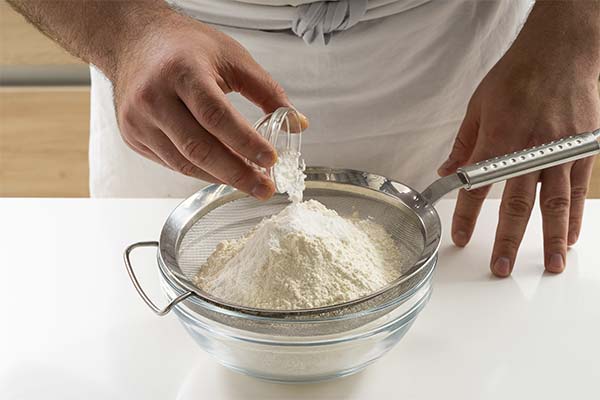
Soda
It is a leavening agent in itself, but gives off very little carbon dioxide. Unquenched it can be used in the dough, if there are already fermented products there.
Soda quenched with vinegar
If there are no fermented products in the dough, then the baking soda must be quenched with vinegar. In doing so, it should be introduced into the dough while it is bubbling and releasing carbon dioxide. But the best solution will be if the baking soda is added to the dry ingredients, and the vinegar to the liquid ingredients, so they will combine already in the process of mixing the products.
Alcohol
It is able to give loose dough due to the fact that it reduces the stickiness of flour. For such purposes, rum or cognac are suitable, because they will give the dough its unique pleasant aroma. Vodka can be added to the yeast dough, especially if a starter is used. In this way, the dough is able to rise even better.
Sparkling water
It is also capable of making the dough lush, especially if you add a pinch of salt and citric acid to it.
When you do not need to substitute leavening agent
When preparing biscuit dough, you can easily do without baking powder. The fact is that the eggs are beaten and oxygenated, thus they themselves participate in the role of leavening agent. To do this, you just need to whip them to a thick strong foam. At the same time, you should know that when adding the other ingredients to the whipped whites, you need to stir everything gently from bottom to top. This is necessary so that the air bubbles do not burst, so that the dough will remain as porous and airy.
How to make leavening dough at home
You need to take 5 tablespoons of baking soda, 3 tablespoons of citric acid and 12 spoons of cornstarch or flour. All the ingredients should be mixed in a glass bowl and stirred with a wooden spoon or stick.
The spoon (stick) and the jar must be completely dry and clean. The spoon must be made of wood, because a metal spoon can cause a premature reaction, and the same will happen if the jar is wet.
How many grams of leavening agent in a spoon
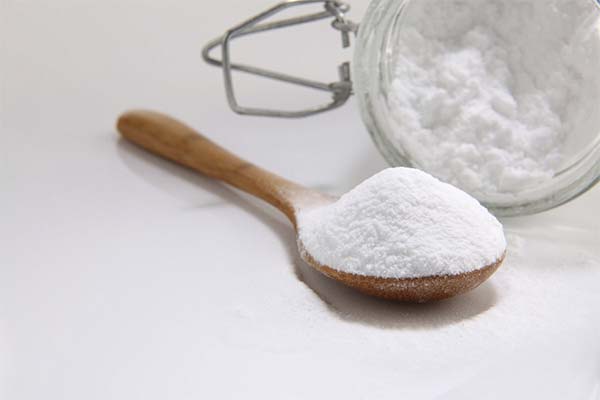
In a teaspoon
One teaspoon holds 3 grams of leavening agent (without the slide) and 5 grams. (with a slide).
In a tablespoon
One tablespoon holds 10 grams of baking powder (no hill) and 15 grams of baking powder (with a spoonful). (with a slide).
How to measure a certain weight of leavening agent with a spoon
- 30 gr. leavening agent is 3 tablespoons without a hill.
- 25 gr. - 2 tablespoons without a hill or 1 teaspoon with a spoonful.
- 20 gr. - 2 tablespoons without the slice.
- 15 gr. - 1 tbsp. Spoonful or 3 teaspoons
- 12 gr. - 1 tbsp. with a reduced spoonful.
- 10 gr. - 1 tablespoon without the slide or 2 teaspoons with the slide.
- 8 gr. 1 teaspoon with a spoonful or 1 tablespoon without a spoonful.
- 7 gr. - 1 tablespoon without the slide (not full).
- 6 gr. - 2 teaspoon without the spoonful.
- 5 gr. - 1 teaspoon with added spoonful.
- 4 gr. - 1 teaspoon with not full slide.
- 3 gr. - 1 teaspoon without the slide.
- 2 gr. - 1 teaspoon without the slide (not full).
- 1 gr. - One third of a teaspoon without the slide.
«Important: All information on this site is provided for informational purposes only. for informational purposes only. Consult with a health care professional before using any recommendations. specialist. Neither the editors nor the authors shall be liable for any possible harm caused by materials."

